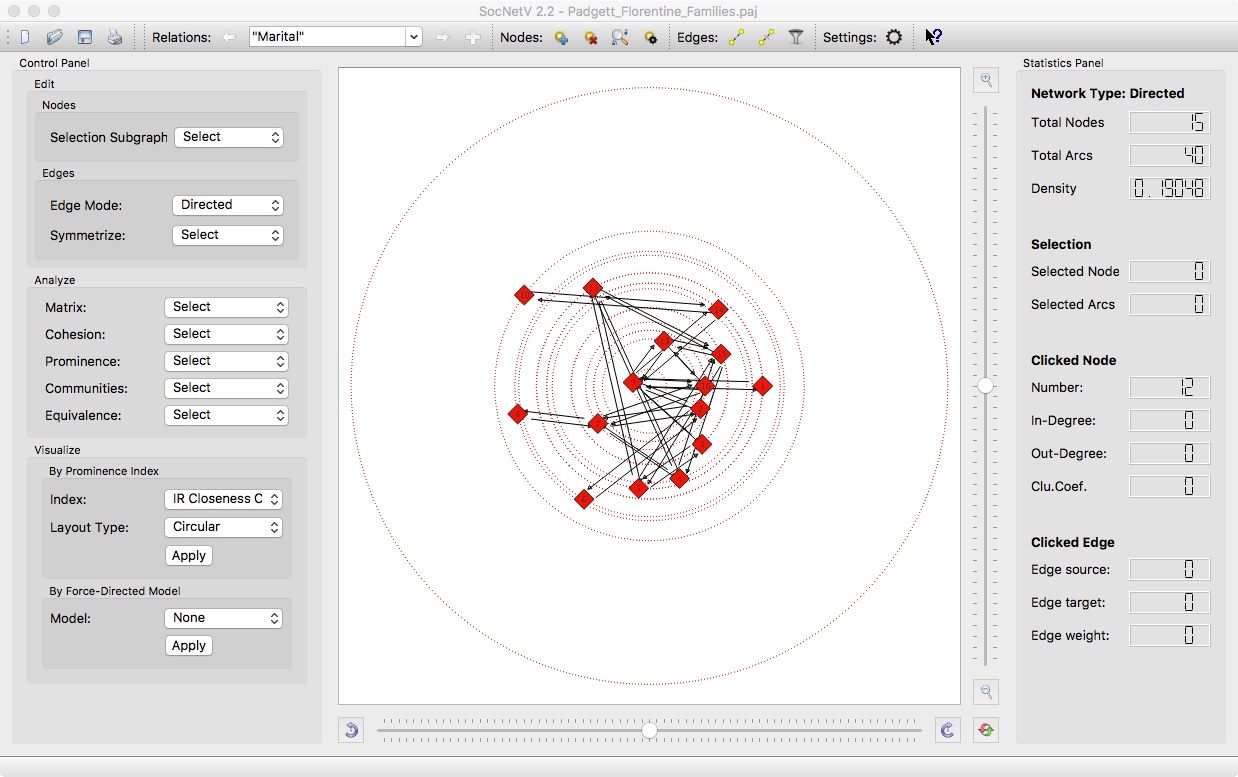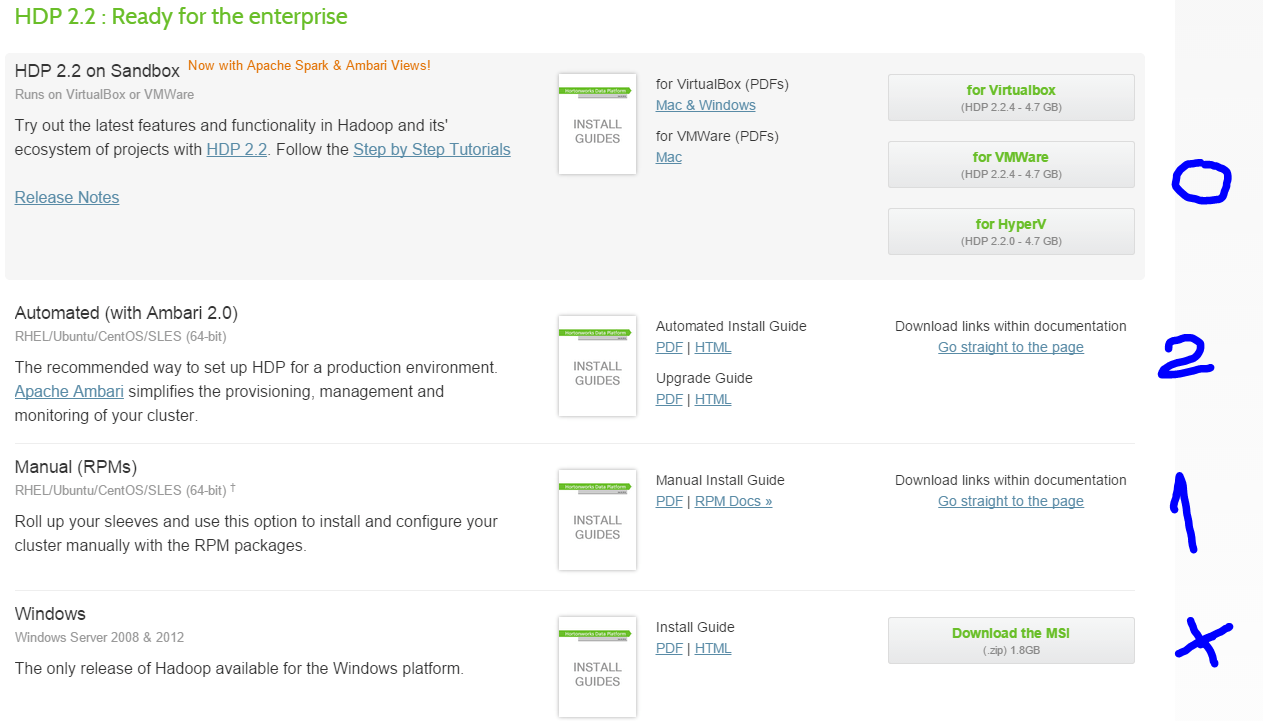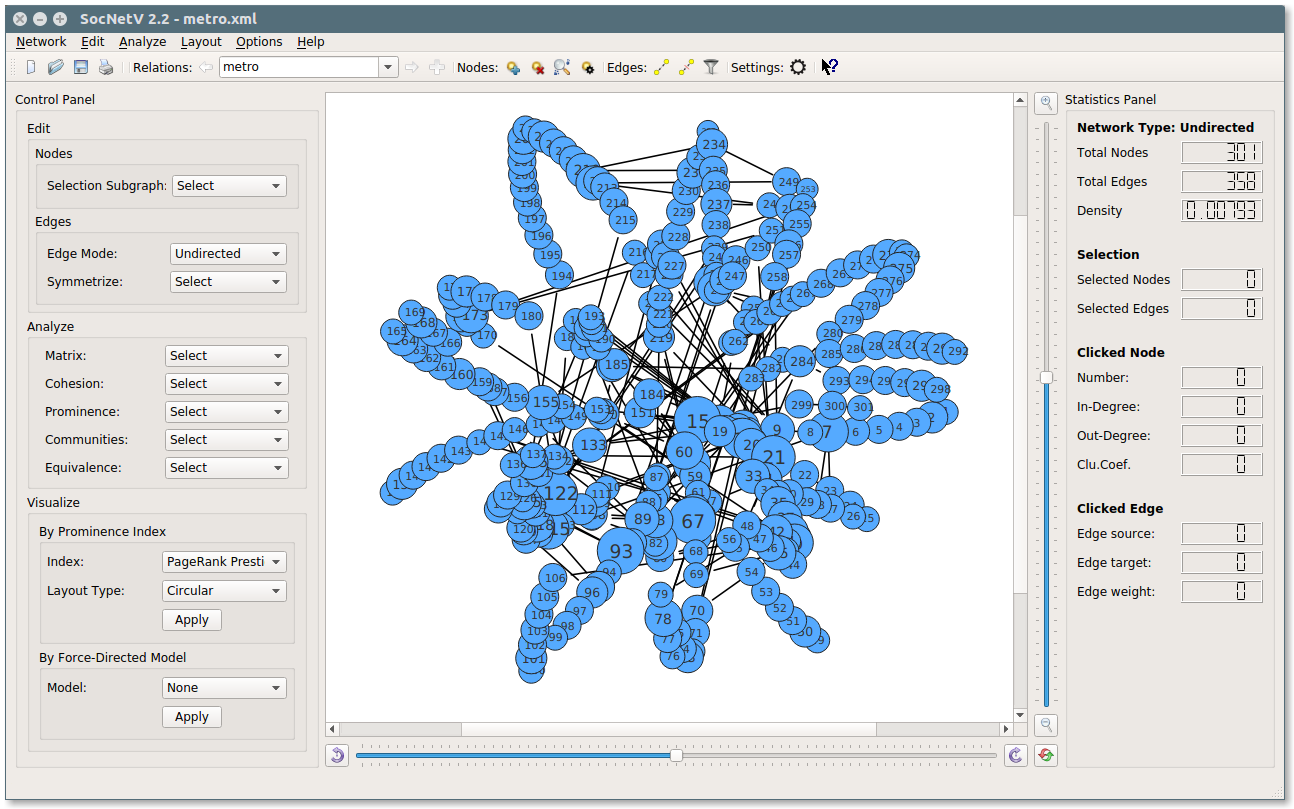
UCINET Torrent UCINET ucinet ucinet download ucinet for mac ucinet tutorial ucinetid ucinet help ucinet data ucinet data format ucinet manual ucinet registration code Check out this comprehensive package for the analysis of social network. 如果您使用的是Mac或Linux,则可以通过BootCamp,VMFusion Ware,Parallels或Wine运行UCINET。 32位版本是标准版本,可在32位和64位Windows系统上运行。 有限的64位版本可用,但不具有所有UCINET功能。.
Social networks are
“a set of nodes and the set of ties representing some relationship, or lack of relationship, between the nodes” (Brass, Galaskiewicz, Greve, & Tsai, 2004, p. 795).
Nodes, or actors, are the units of analysis in SNA and may represent individuals, groups/communities, organizations, or countries (Zack, 2000). Relationships define the connections or flow of material or non-material resources among the actors (Wasserman & Faust, 1994), and “resources might include social support, emotional support, companionship, time, information, expertise, money, business transactions, shared activity” (Williams, 2005, p. 22). For more information about networks, and definitions of some key terms, please read Introduction to Social Network Research: General Introduction and Major Terminology.
UCINET (a Windows product) is a comprehensive package for the analysis of social network data as well as other 1-mode and 2-mode data. Can read and write a multitude of differently formatted text files, as well as Excel files. Can handle a maximum of 32,767 nodes (with some exceptions) although practically speaking many procedures get too slow around 5,000 – 10,000 nodes. Social network analysis methods include centrality measures, subgroup identification, role analysis, elementary graph theory, and permutation-based statistical analysis. In addition, the package has strong matrix analysis routines, such as matrix algebra and multivariate statistics.
Integrated with UCINET is the NetDraw program for drawing diagrams of social networks. In addition, the program can export data to Mage and Pajek, other two software used for network analysis
The full program can be downloaded and used free for 60 days.
Required reading

Hanneman, R. A. and Riddle M. 2005. Introduction to social network methods. Riverside, CA: University of California, Riverside ( published in digital form at http://faculty.ucr.edu/~hanneman/ )
Installation notes
Windows
Installation works best if you right-click on the installation file (typically called something like setup32UCI6534.exe) and choose ‘Run as Administrator’. Similarly, it is also helpful to use ‘Run as Administrator’ when running UCINET itself for the first time, as this allows you to register the program for all users of your machine.
MAC
The best way to run UCINET on a Mac is to use a Windows emulator such as Parallels (or, of course, Bootcamp). However, it is (often) possible to run UCINET on a Mac using Wine. For more information, see this FAQ.
Be ready with the software installed in your portable computer by monday 28th when we will start work on it.
Questions? Send me an e-mail at silvia.sedita@unipd.it or leave your comment above.
Using UCInet Mobile Access requires registration of your hardware or MAC address. If you are using Manual Registration, you will need to locate the MAC address of your wireless device. Use the directions below to locate your MAC address.
What is a MAC address?
A MAC (Media Access Control) address is the hardware address of the Network Interface Card (NIC) of your computer. You must have it on hand to register for the UCInet Mobile Access network and campus-wide DHCP services. This Web page will help you locate and identify it so you may register your Network Interface Card (or cards) for the network.
Finding Your MAC Address
Windows
Windows (two methods)
Method 1:
- Click Start and in the Search Programs and Files box type ncpa.cpl and then push Enter on your keyboard.
- The Network Connections window will appear. Double-click on either Local Area Connection icon (if you are trying to register your Ethernet/wired connection) or Wireless Network Connection.
- In the window that appears, click Details… and in the subsequent window you’ll see the Physical Address field: that is your MAC address.
Method 2:
- Click Start then Run (in Windows 7, Start and type in the Search Programs and Files box.)
- Enter: cmd
- Enter: ipconfig /all
If the output scrolls off your screen, and it will on Vista and Windows 7, use: ipconfig /all | more - The Physical Address is your MAC address; it will look like 00-15-E9-2B-99-3C. You will have a physical address for each network connection that you have.
Mac OS
Mac OS
- Click on the Apple menu then System Preferences then Network
- MAC address for wireless connections:
- Select AirPortor Wi-Fi from the list on the left.
- Click the Advanced button.
- On the AirPort or Wi-Fi tab, the AirPort ID or Wi-Fi Address is your MAC address.
Linux
Linux
- Become root, using su.
- Enter: ifconfig -a
- The ethernet devices are called eth0, eth1, and so on The MAC address is in the first line of the output, labeled HWaddr, it is 00:09:3D:12:33:33.
Mobile - iOS, Android, Kindle
iOS
- From the Home menu, tap on Settings.
- Tap on General
- Tap on About
- Scroll down to Wi-Fi Address and write down the address. This is your MAC address.
iOS 14+

There is a new setting in iOS 14 that may change which address our network verifies for registration. If you have updated to this version, you may need to go through the following steps instead.
- From the Home menu, tap on Settings.
- Tap on Wi-Fi
- Tap on the Information Icon next to UCInet Mobile Address or ResNet Mobile Access
- Scroll down to Wi-Fi Address and write down the address. This is the MAC address associated with this particular network. Note that each network will have a unique address associated with it. As such, if both campus networks are used then both addresses would need to be registered.
Android
- Go to Settings->Wireless Controls->Wi-Fi settings.
- Tap the 3 dots on the top right corner.
- Tap Advanced.
- Swipe all the way down to the bottom, and you will see both the IP and MAC address.

Kindle
Ucinet For Mac

Ucinet Per Mac
- From the Home screen press Menu
- Select Settings
- The Wi-Fi MAC Address is located toward the bottom of the screen in the Device Info section.